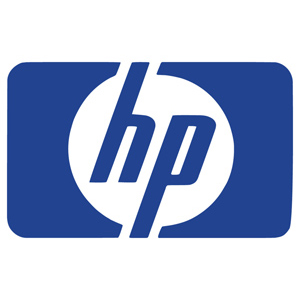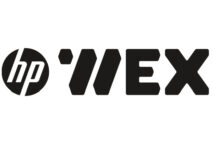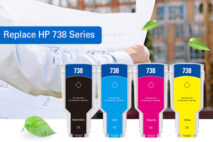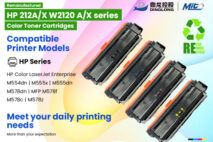
by Charles Brewer, President, Actionable Intelligence
From June 20 to 22, HP Inc. held its 2016 Industry Analyst Summit at the Boston Hyatt. Attracting attendees from such regions as the Americas, Asia, and Europe, it was the first industry analyst conference the firm has hosted since it parted company with Hewlett Packard Enterprise in November 2015. With its new, exclusive focus on printing systems and personal computing, the HP Inc. analyst summit, which began 226 days after the firm’s formation, was more centered than past HP events we have attended. Rather than hearing a lot of talk about the cloud and enterprise data storage, the HP Inc. event focused on 3D printing, PC gaming, immersive computing, security, workflow management solutions, and, of course, hardcopy printing.
General Session
Following a reception held on the prior evening, the conference kicked off on June 21 with a general session featuring HP Inc.’s top brass. President and Chief Executive Officer Dion Weisler told the audience that the firm’s core total addressable market—or TAM in HP-speak—is currently worth $415 billion. He said the firm will grow its near-term TAM by more than $155 billion as it attacks market segments such as the higher end of the personal computer space as well the A3 copier market, which HP will begin to pursue next year. Mr. Weisler estimated that in the future, HP’s TAM will grow an additional $30 billion as the firm rolls out new technologies for what he calls “blended reality.” These will include new applications that fuse together the physical and digital worlds, including applications that will meld 2D and 3D printing.
Currently, Mr. Weisler said, there is a worldwide trend toward combining commercial and consumer markets. So-called “millennials,” a generation of young people who have come of age and entered the workforce in the twenty-first century, are driving the trend. The millennial demographic is mobile and seeks to work outside of the traditional office, and HP aims to provide the technology to meet this demand. In addition to developing new products with feature sets that can accommodate a more mobile workforce, HP will look to provide IT professionals with new tools that can securely connect and work with evolving corporate computing landscapes. According to Mr. Weisler, a recent poll revealed that 73 percent of CIOs feel the trend toward mobility will have a bigger impact on the systems that they manage than the Internet has had, and HP can capitalize on mobility as it helps to ease the pain IT teams throughout the world face as they accommodate an increasingly mobile workforce.
Mr. Weisler said that millennials, in addition to being more mobile, are driving a shift in the market away from traditional transactional product purchases and toward new contractual services. This shift in the market is allowing the new HP to revitalize its consumer printing business as it drives growth in commercial applications, he explained. Over the course of the analyst summit, other HP executives referenced the key trends articulated by their boss and detailed how HP is leveraging current market dynamics toward mobility and services to grow the company.
Following Mr. Weisler, Chief Financial Officer Cathie Lesjak talked to the assembled analysts about the strengths in HP Inc.’s business, including its recurring revenue stream, negative cash-conversion cycle, and what she called an “efficient operating model” that drives strong margin and cash flow. She said that the company has successfully grown the average sales price (ASP) of its products as it has picked up a couple of points of market share since going solo. It is clear that the performance of the firm’s print business is essential to the overall viability of HP Inc., and supplies sales play a critical role in the company’s future success. Ms. Lesjak explained that consumables sales are not only reoccurring, they are also “very high margin.”
A quick look at the numbers underscores the importance of HP Inc.’s printer business and its consumables sales to the entire company’s top and bottom lines. During its first six months as a going concern, approximately 61 percent of HP Inc.’s total $23.7 billion revenue came from computer sales, but 77 percent of its total $2.1 billion operating profit was generated by the printer business. During the first half of the year, 67 percent—or nearly $6.2 billion—of the Printing group’s $9.2 billion total revenue came from supplies sales, which has helped HP’s Printing business maintain an operating profit margin of nearly 17.3 percent. That percentage is higher than that of any of HP’s rivals in the printer or copier space.
After Mr. Weisler and Ms. Lesjak spoke, HP’s Chief Marketing and Communications Officer Antonio Lucio talked about how HP Inc. plans to use its insights, innovation, digital-engagement tools, experiences, and corporate accountability to build emotional connections with its customers. Ron Coughlin, president of HP’s Personal Systems group, cited International Data Corporation (IDC) data indicating that the company has grown its share of the worldwide commercial PC market to 24.6 percent as of the first quarter of fiscal-year 2016—a number he claimed is a “historic high share.” 3D Printing Business President Steven Nigro discussed how the faster speeds in HP’s Jet Fusion 3D Printing Solutions will help transform the 3D space beyond prototyping and into production, which will help transform manufacturing worldwide. To achieve this, HP is breaking with its traditional approach to the consumables segment, which is based on proprietary cartridges, and opening up the systems to partners that can expand the range of materials used in Jet Fusion devices.
All about Printing (and Supplies!)
While it was interesting to hear HP’s leadership team talk about the future of categories such as 3D printing and PCs, we attended the analyst summit to learn about the new firm’s traditional printer business. To that end, we were all ears when Enrique Lores, president of Imaging, Printing, and Solutions, made his general session address. He said quite clearly that his group has one goal: sell more printers that end users will use to print more pages with HP original supplies. The message was clear that in the printer business, it is all about supplies.
According to IDC data that Mr. Lores presented, HP is number one in terms of unit shipments of inkjet and laser printers as well as in certain segments of the wide-format and industrial printer markets. He predicts that between 2016 and 2019, the combined markets in which HP competes will grow 0.6 percent annually to reach $235 billion in 2019. In addition to the two growth areas that Mr. Weisler identified—mobility and A3—Mr. Lores said that marketing more services and solutions along with more equipment for graphic applications will provide growth opportunities.
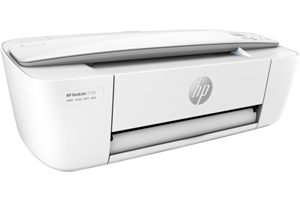
HP’s DeskJet 3755 all-in-one
Mr. Lores also said HP plans to “reignite” printing in the home by improving and simplifying multiplatform printing to allow home users to print from a variety of devices. The company will release more products designed for the needs of millennials, such as the models in the new DeskJet 3700 family, which have a tiny foot print (and price tag), are Instant Ink-ready, and have standard WiFi connectivity (see “HP Looks to Tempt Cost-Sensitive Home Users with New DeskJet 3755”). During a breakout session, Santi Morera, global head and general manager of inkjet printing solutions at HP, explained that while print volumes in the home are not expected to grow, home printing should stabilize. Simplified printing from mobile devices is key to slowing the decline. Of the 80 million millennials in the United States, 85 percent own a smartphone and 37 percent of the pages they print come from a mobile device. This year, Mr. Morera said, inkjet machines will print more than 4 billion pages from jobs that originated from a mobile device, and that number will grow by about 30 percent next year. With HP-compatible print solutions, the company is working to make all mobile devices easy to set up and print from, regardless of operating system.
A major driver of home printing, said Mr. Morera, comes from consumers who still want to print a variety of materials, including tickets, recipes, email, scanned documents, homework, and, of course, photos. He indicated that some 1 trillion photos are taken with mobile phones annually and that 76 percent of mobile-device users continue to print photos. HP is also enabling ways for mobile users to print from content-rich social media applications, including Facebook, Google Photos, and Instagram. In Facebook, users can share content with a printer the way they would with a friend online thanks to an HP Print Bot that launched with Facebook F8. Opportunities to drive even more consumer printing are expected to emerge from the so-called Internet of Things.
Office Printing
Mr. Lores maintained that HP continues to offer the best choices for printing in the office. He noted three key drivers to growth in HP’s office printing business: secure printing, capturing A3 pages from copiers, and offering print as a service. “We have the most secure printers in the world,” Mr. Lores said emphatically. He further claimed that none of HP’s competitors are capable of offering comparable security.
Tuan Tran, HP’s global head and general manager of office printing solutions, made a clear case for printer security in his breakout session, which detailed vulnerabilities to printer hacks. Despite recent news accounts of several printer-related security breaches, including an attack on printers at a dozen U.S. colleges that resulted in the machines generating documents containing anti-Semitic hate messages, Mr. Tran said that printer security is not high on the list of concerns for most IT professionals. His message was obvious—HP will be making a lot of noise about its printer security to win over more business customers. We expect that HP’s message should resonate with IT departments as printer hacks grab more headlines.
We have often heard from HP execs that when it comes to hardware, the firm can supply office users with both the best-in-class laser devices as well as business-class inkjet units. Mr. Tran followed that script in Boston. Noting the JetIntelligence-based LaserJets that debuted last year, he said, “We are right in the middle of our JetIntelligence rollout.” Mr. Tran said the company has gained 9 percent of the higher end of the market, which HP targeted with the release of its LaserJet Enterprise 500 series last year (see “HP Makes Security the Focus with JetIntelligence-Based LaserJet 500 Series”). He also indicated that HP’s refreshed and rebranded PageWide business-class inkjet machines (see “Yet Another Business Inkjet Push from HP: How Is This One Any Different?”) have been well received and have helped HP grab share in the A4 market.
Like Mr. Lores, Mr. Tran said that HP will reinvent the A3 market; however, he did not provide many details. We learned last year that HP’s A3 machines will be available in early 2017, and it appears that HP is on schedule to hit that launch target. HP executives said that the A3 line will include LaserJet units as well as PageWide devices. While we can safely assume that the inkjet machines will be based on home-grown HP technology, we still do not know the source of the electrophotographic engines, and Mr. Tran was not talking. Mr. Lores said that the A3 machines will offer end users enhanced “convenience, reliability, and cost” and will be deployed using a targeted channel strategy. Beyond that, both Mr. Tran and Mr. Lores remained tight-lipped.
Managed Print Services, Instant Ink, and Print-as-a-Service
The HP executive team talked a lot about growing revenue with print-related services for both home and office environments and said that HP is expanding its services portfolio. Mr. Lores indicated that regardless of any shrinkage in certain markets, HP can transition core customers to new services to drive future business. Services are also great for driving sales of HP-brand consumables because cartridge replenishment and order fulfillment are often key features of HP’s printing services.
For the home, Mr. Morera said that HP will continue to innovate with services such as Instant Ink, which is proving to be quite a hit with end users. He said Instant Ink has been one of the web’s fastest-growing paid services, enrolling 1 million users in 27 months. It outpaced the Dollar Shave Club, Netflix, and Spotify in the amount of time it took to reach the 1-million-user milestone, and, with a 96 percent retention rate, its subscribers tend to remain with the service. Moreover, Mr. Morera said that five times as many subscribers increase the number of pages they want to purchase each month.
HP is also looking into new ways that home users can subscribe to services for their printers. For example, the company is reviewing what Mr. Morera called the Auto Replenishment System (ARS) service. Through this service, rather than purchase a fixed amount of pages to print each month, customers can sign up for a plan that replenishes cartridges as needed using an HP cloud-based system, which monitors ink levels and triggers fulfillment alerts. The cartridge-based service is similar to the page-based Instant Ink service, which continues to grow and is being fueled by a growing installed base of Instant Ink-capable machines that now totals over 13 million units. In addition to the ARS program, HP is piloting alternative plans to address a variety of customer profiles. The new plans include offering higher and lower page volumes as well as the opportunity to prepay for services.
HP also continues to grow its print services for business users and, like Instant Ink, it appears these services for the office are popular. General Manager and Global Head of Print Services Mike Weir said that HP is now number one in managed print services (MPS) customer satisfaction. The firm was recognized last year as a leader in the MPS market by Gartner and IDC. Today, nine of the world’s top 10 pharmaceutical companies are HP MPS clients, along with eight of the top 10 banks. According to data presented by Mr. Weir, the annual growth rate of HP’s MPS revenue is twice that of the overall MPS market and the firm is enjoying a 70 percent win rate.
While HP is now an established MPS player in the enterprise space and in the public sector, Mr. Weir said that there is still more room to grow. Small to medium-sized businesses (SMB) and micro businesses, which are the fastest growing MPS segments, offer the potential for very healthy growth. This year, the total addressable market for enterprise and public sector clients is $12.6 billion, and that will grow at a compound annual rate of 2.5 percent through 2019. At $9.3 billion, the 2016 SMB TAM is smaller, as is the $1.4 billion micro business TAM, but the growth rate for each is larger at 4.9 and 4.4 percent, respectively. According to Mr. Weir, the decline in office page volumes we hear about is misleading. The drop in printed pages is a result of duplexing, not a reduction in printing among end users. He maintains that the number of impressions printed on the front and back of pages has flattened and is now growing slightly.
HP is expanding its services to grow its business in each market segment. The company aims to expand support for its enterprise and public sector clients and increase the range of solutions and products it offers for large organizations. In order to reach more SMB clients and penetrate the micro-business space, the company plans to expand its channel and deploy more cloud-based solutions to support the channel and simplify offers for smaller businesses. To grow share in the mid-market MPS area, Mr. Weir said HP has a variety of offerings that range from the opportunity to be an HP MPS reseller to supporting channel partners that are running their own MPS practices. HP provides the channel with print services options that bundle hardware and supplies to target micro companies that have between 20 and 25 users. HP also offers a supplies-only MPS program.
Our Take
Overall, we were impressed by what we heard from HP in Boston. First and foremost, it is clear that HP Inc. has a renewed focus on the printing segment that we have not seen from the company in years. As it entered a new century, products from HP’s former Imaging and Printing Group were the key market differentiator for the firm. With a wide assortment of printers and other products for the home and office, HP had an important competitive edge that pure-play rivals like Lexmark could only envy and high-tech firms like Dell tried—with little success—to replicate. Within less than a decade, however, HP lost much of its competitive advantage as market conditions turned away from hardcopy and its management team made various missteps that weakened HP’s market position.
It appears that the senior managers want to change all that. They seem willing to do the heavy lifting needed to take back the leadership position HP once held in the printer market. Listening to speakers at the event, we felt that HP’s management team demonstrated a clear-eyed understanding that the hardcopy industry will never enjoy the growth it experienced a decade and a half ago, and that’s okay. HP Inc. sees plenty of opportunities across the hardcopy space, and it is willing to make changes to its business model and invest in new technologies that will allow it to exploit them.
Success is not assured, however. Although HP talks a good game when it discusses supporting the channel, many companies in the channel that we have encountered over the years do not like working with HP. We sense that the company’s hardware and supplies sales have been plummeting over the past few quarters because channels have gravitated to new manufacturers. Copier dealers and IT VARs have long grumbled about sourcing products from HP, and the expanded portfolios of A4 and A3 devices from traditional copier firms have eaten into HP’s installed base. Moreover, stricter qualifications for supplies vendors have caused many firms to shop in the gray markets for HP consumables or to buy HP compatibles and remanufactured cartridges from third-party suppliers. In order to be successful, HP must make nice with the channel, and from what managers in Boston told us, they understand that and are willing to show more channel love.
The other big problem, of course, is that people in homes and offices are looking for ways to print less. For more than 10 years, we have heard that HP will spark more printing in the home by offering features such as easier photo printing. HP first tried to generate more photo printing by offering new ways to easily manipulate and print pictures from digital cameras, and the new message is essentially the same, but for mobile devices. Although we do not scruple with HP’s claim that huge numbers of digital images are captured each year, we are skeptical of the firm’s ability to turn those images into prints. Likewise, claims that declining page volumes in the office are the result of duplexing seem weak. At most companies, the transition to two-sided printing happened long ago.
With all that said, however, we do think that HP is on the right track with its services offerings, and selling more services will grow the entire business. We agree that there is a move in the market toward contractual plans rather than transactional purchases. Consumers understand the subscription model, and we think that’s why the Instant Ink program has been so successful. Look for HP to replicate similar value propositions in similar services for home users, which should grow that segment for HP. The firm has also learned how to sell MPS at least through its direct salesforce. It seems HP is now in a good position to take this knowledge to the channel as it looks to better penetrate the SMB and micro-business market.
HP Inc.’s industry analyst summit made it clear that, despite any decline in the hardcopy space, the new firm’s success is reliant on the success of its print business. Given the operating profit that the printing group generates, the very existence of HP Inc. may be decided by the success of print. We’ve said it since we heard the initial reports that HP would be split in two: by combining print with PCs in one standalone company, HP is betting the farm that print can provide enough profits to sustain the new firm. HP Inc. appears to have the right products and services to succeed, but it remains to be seen if it can execute in the current market.


